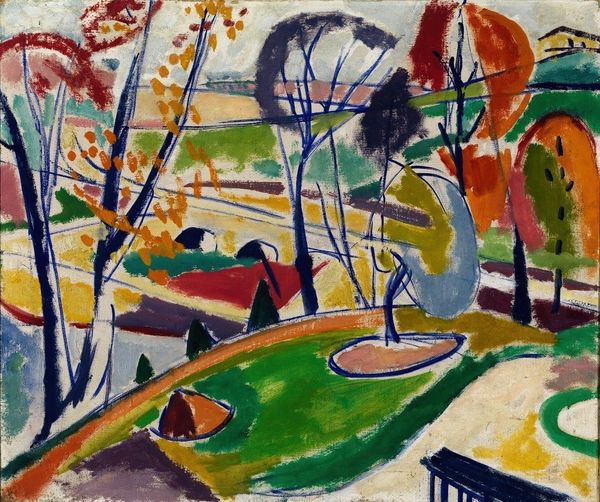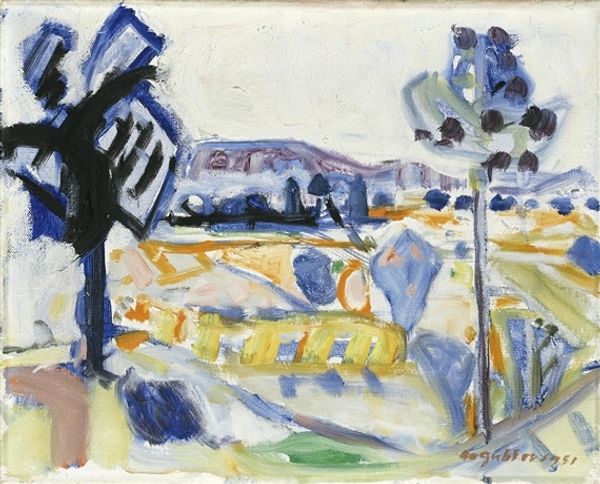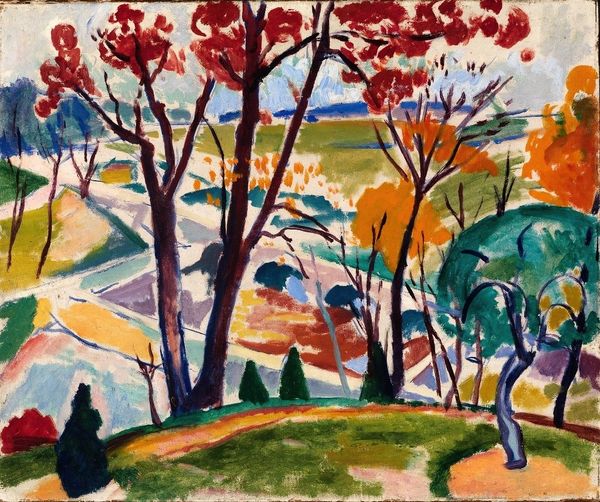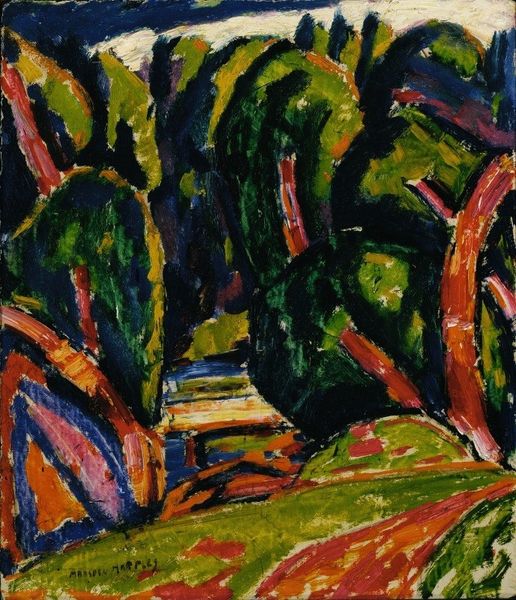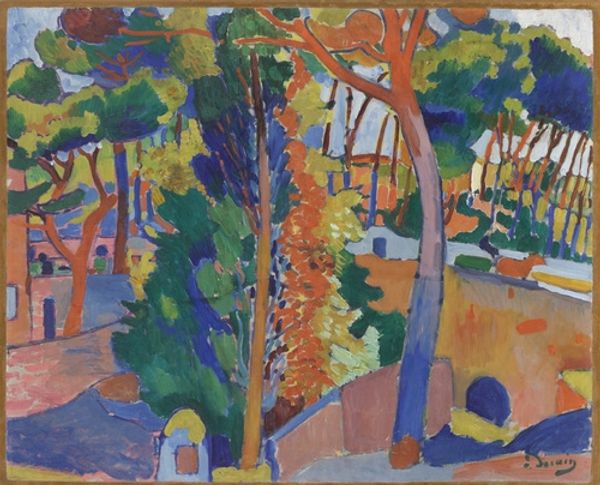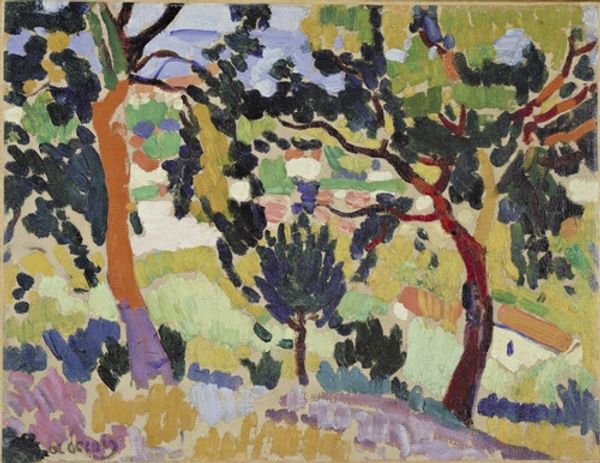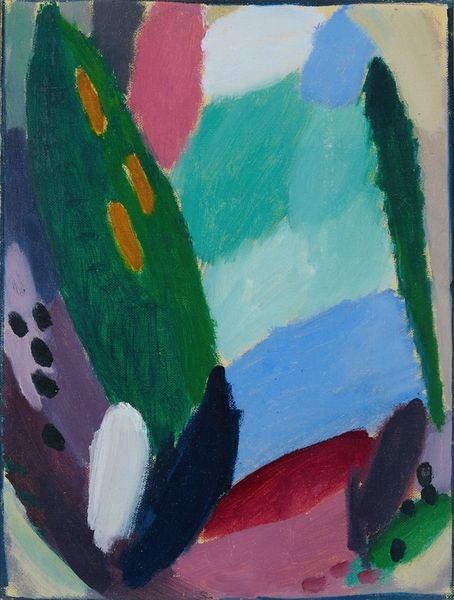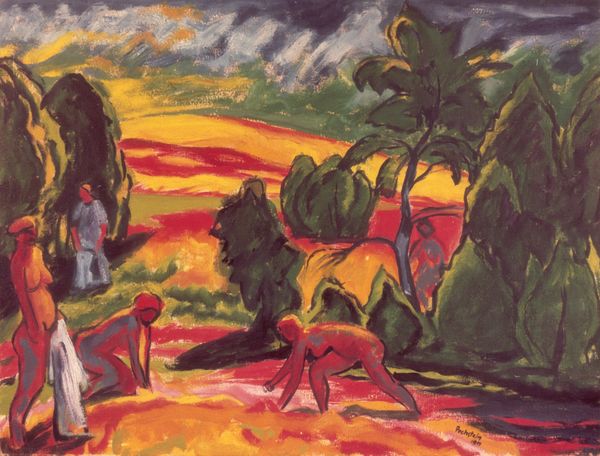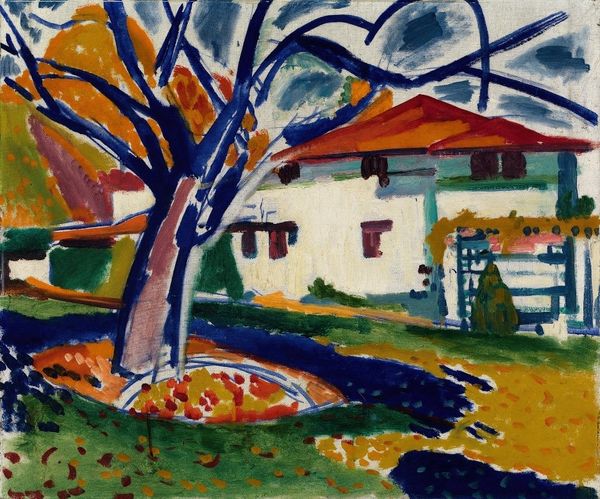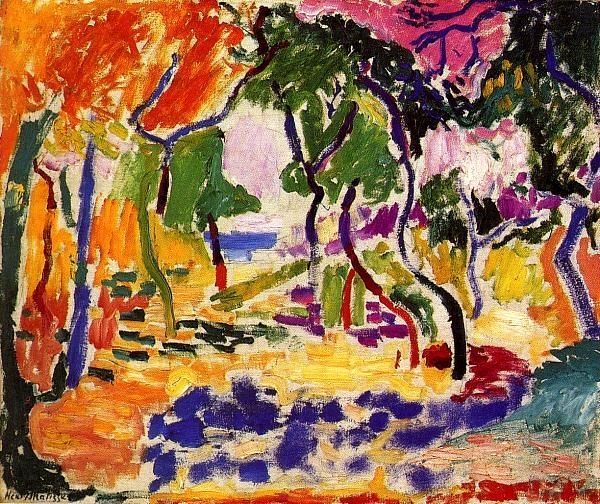
Copyright: Public Domain: Artvee
Editor: Here we have Henry Lyman Saÿen’s "Garden," painted around 1915 using oil paints. It's so vibrant. All the colors are singing. What do you make of it? Curator: I see a profound engagement with materiality. Look at how Saÿen lays down those strokes of paint, almost as if he's building the garden itself, layer by layer. The physicality of the paint becomes a critical component. How do you think the making process informed the composition? Editor: Well, the rough brushstrokes feel very deliberate, almost performative, drawing attention to the act of painting rather than simply depicting a scene. Curator: Exactly. And consider the context. This was painted during a time of massive industrial expansion. Saÿen, instead of glorifying progress, seems to be reclaiming the handmade. This return to simpler modes of production highlights a tension, doesn’t it? It values the work, and the material. What might a Fauvist garden represent during a time when people were becoming increasingly removed from nature? Editor: Maybe a yearning for a connection to the earth, a rebellion against the increasingly mechanized world? Curator: Precisely. So, it’s not just a garden; it's a commentary on labor, consumption, and our relationship to the natural world, constructed and conveyed through the material act of painting. The choice of oil paint itself becomes a statement. How does this challenge traditional ideas of ‘high art’ in your view? Editor: It's breaking down those old boundaries, valuing process and the physicality of art as much as, or maybe even more than, the subject itself. I see a much deeper layer of social commentary than I first thought! Curator: Absolutely. By focusing on how it was made and with what, we uncover deeper meanings.
Comments
No comments
Be the first to comment and join the conversation on the ultimate creative platform.
